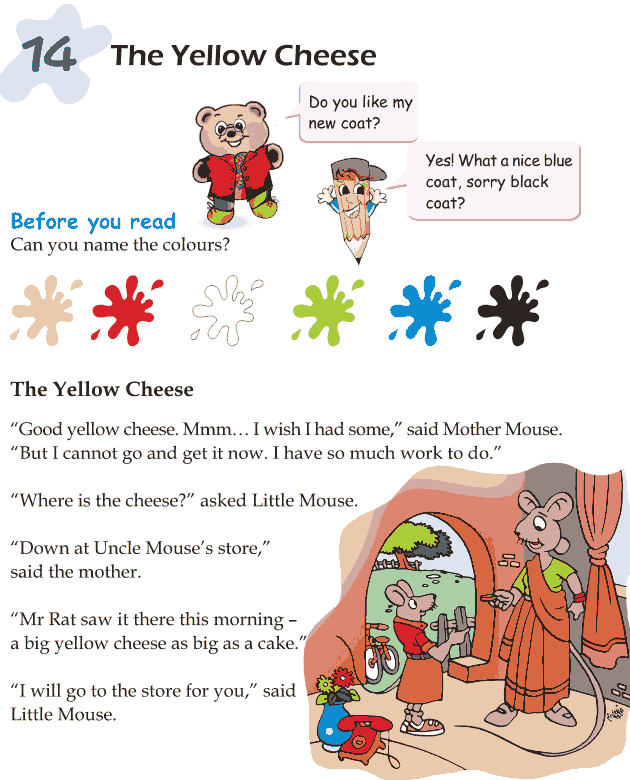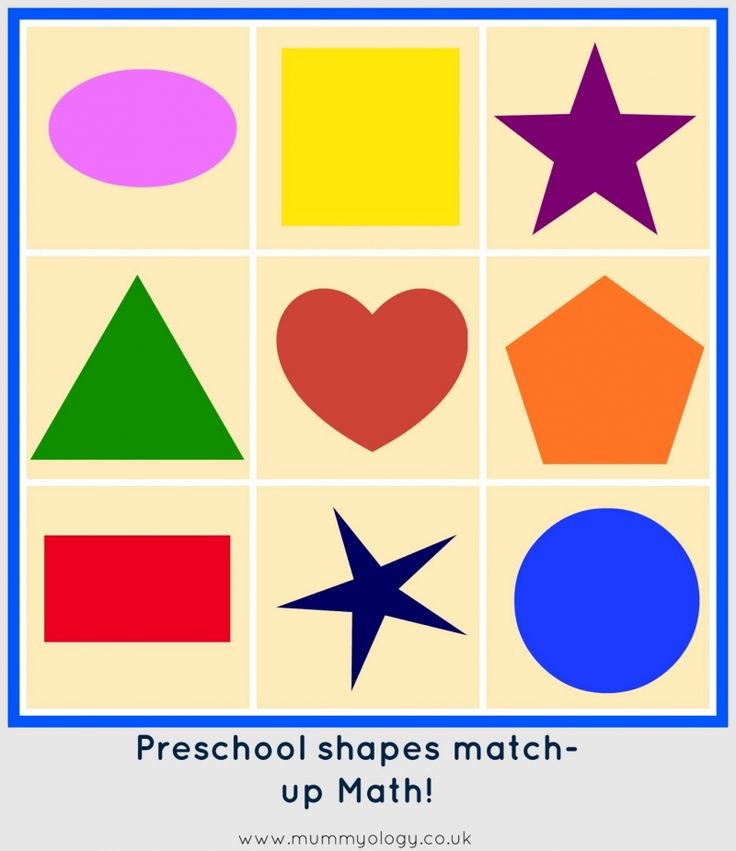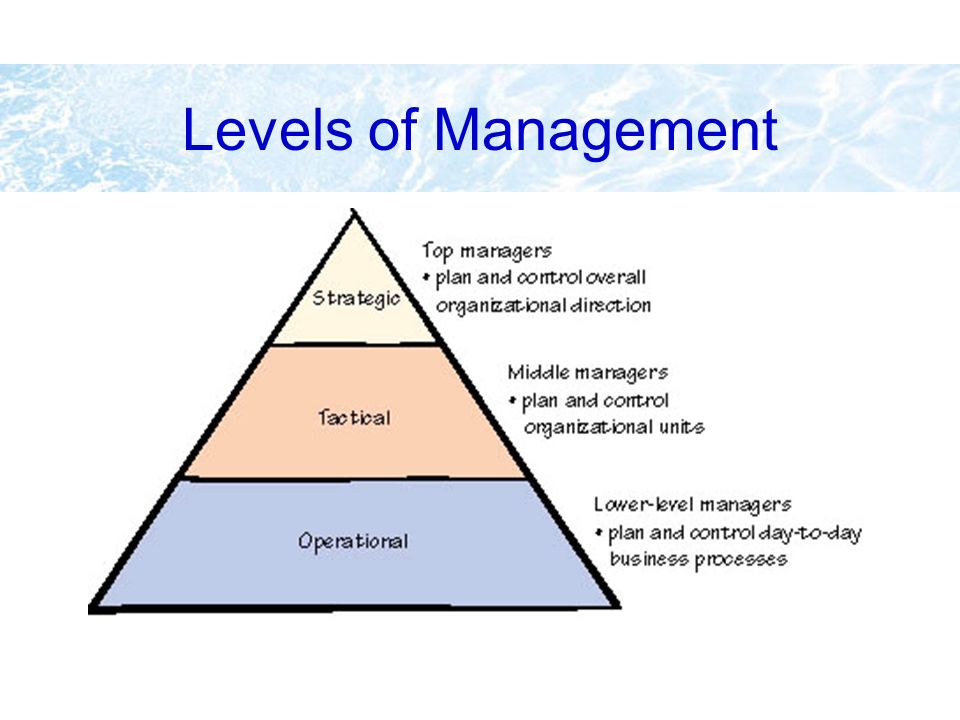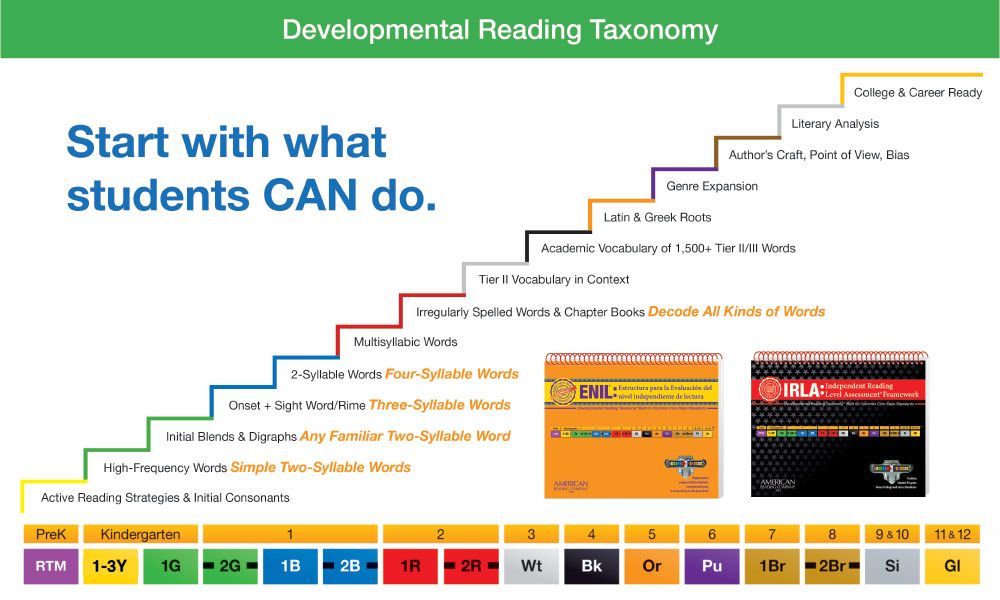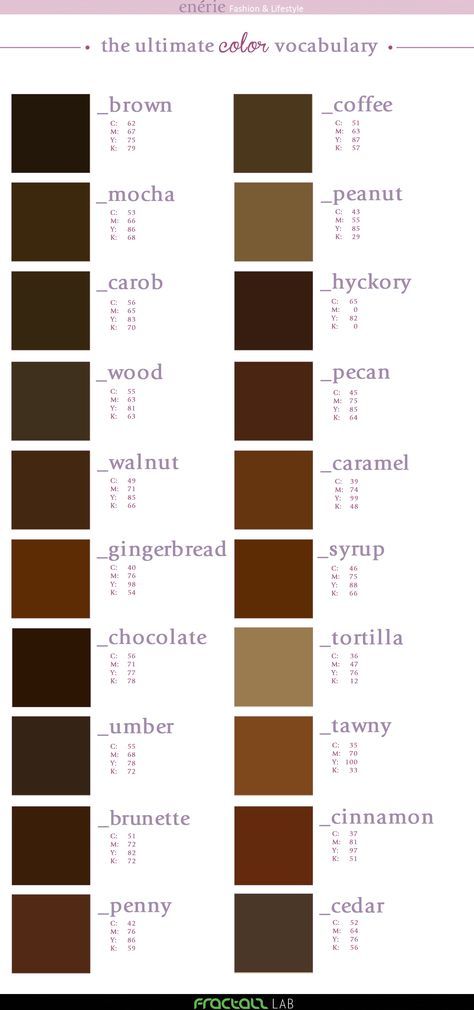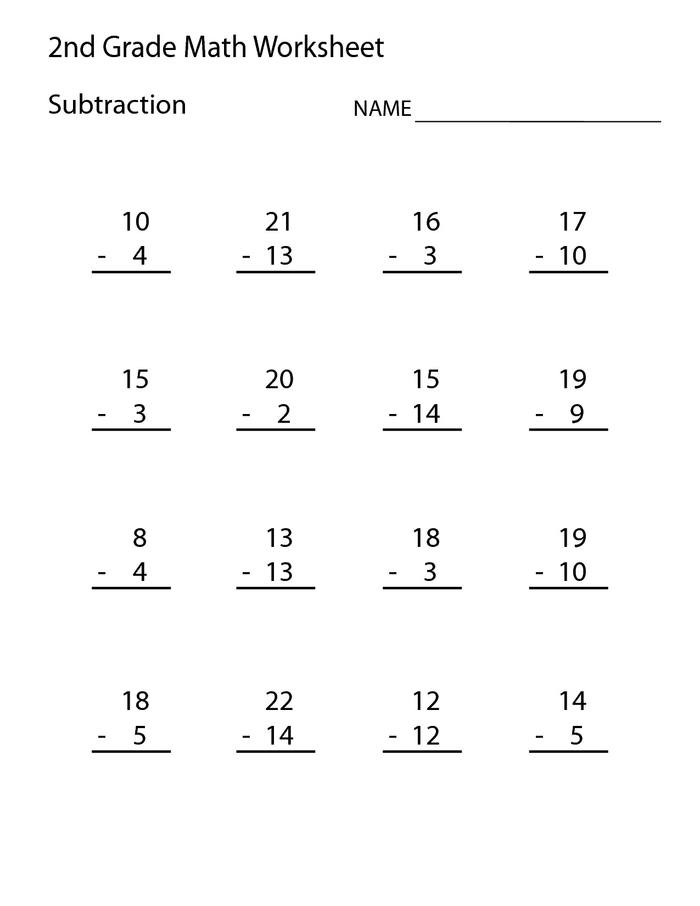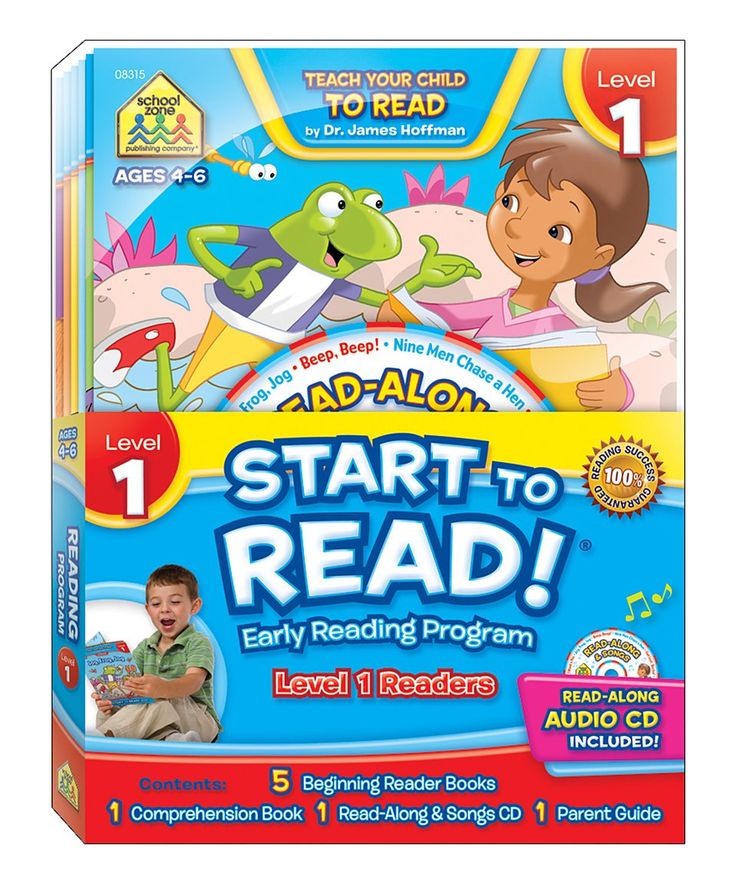Activities for teaching vocabulary
20 Meaningful Vocabulary Activities for Every Grade
Learning new words is like adding to your writing wardrobe. Your writing becomes so much more interesting and engaging when you have more options available. These vocabulary activities work for all ages, K-12, and provide kids with a variety of learning options to help them build their own word bank.
1. Make a word map
Word maps help deepen understanding of a vocab word by relating it to other words and concepts students already know.
Learn more: Word Map/Upper Elementary Snapshots
2. Use the Frayer Model
Frayer models are a popular way to learn new words and concepts. Kids define the word in their own terms, then list facts and characteristics, examples, and non-examples.
Learn more: Southern Fried Teachin’
3. Draw vocabulary sketchnotes
Kids and teachers love sketchnotes! Rather than writing out definitions, have students draw a sketch that sums up each word instead. It’s a lot more fun and gives kids an image for visual association and to help remember the meanings.
Learn more: Now Spark Creativity
4. Bump words along
Group vocab words together with a few other words with similar meanings and one that’s an antonym. Students identify the antonym and “bump” it to the next box, filling in the next group of words. They continue until the worksheet is full.
Learn more: Reading and Writing Haven
5. Post a Graffiti Wall
Think of a vocabulary graffiti wall like a collaborative word wall. In the classroom, post the words on the wall and have kids add sticky notes to illustrate the term (they can use words or pictures). Online, try a tool like Padlet or Google Slides.
Learn more: Digging Deeper
6. Match words to describe character
This is a terrific way to practice vocab words pulled from books you’re reading. Ask students to use various words to describe the different characters in the book and their feelings, thoughts, and actions.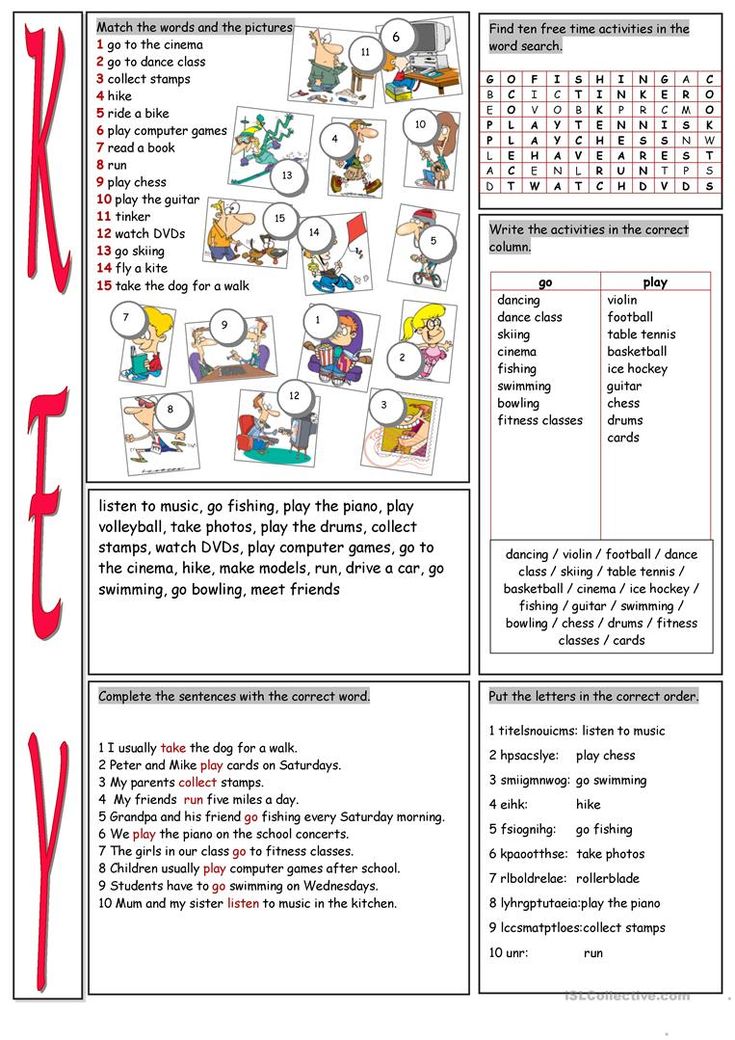
Learn more: The Sassy Apple
7. Fill in words from A to Z
This vocabulary game is fun and challenging, and you can play it at any age. Choose a word, then challenge kids to come up with related words for as many letters as possible. These could be synonyms, antonyms, examples, and more. Trickier letters are worth more points!
Learn more: A to Z/Lit in Focus
8. Try Flipgrid for vocabulary activities
Forever a Teacher at Heart/Twitter
Are you on the Flipgrid bandwagon yet? It’s perfect for vocabulary activities! Have kids record a quick video for each word, using their creativity to make it fun and meaningful.
9. Battle it out in Vocabulary Jeopardy
Good vocabulary activities encourage more than just memorization of definitions. That’s why we like this Jeopardy game idea. It explores synonyms and antonyms and how words are used in real sentences.
Learn more: Not So Wimpy Teacher
10. Use RAFTs to write vocabulary stories
Writing a story using vocab words is a perennial favorite, but the RAFT method gives it a new twist.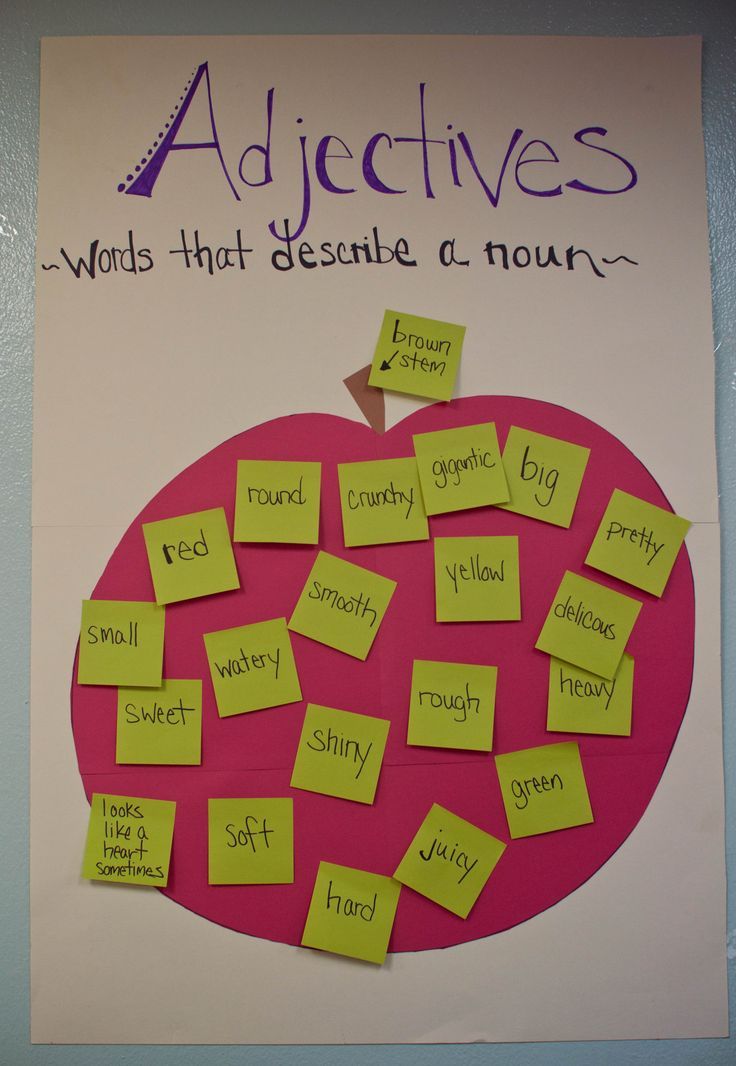 Students are assigned a Role (the point of view from which they’ll tell the story), an Audience, a Format, and a Topic. For instance, they might be an astronaut (Role) writing a postcard (Format) to their friends back home (Audience) about what they’ve seen on Mars (Topic). RAFTs are especially great for kids who claim they don’t know what to write about.
Students are assigned a Role (the point of view from which they’ll tell the story), an Audience, a Format, and a Topic. For instance, they might be an astronaut (Role) writing a postcard (Format) to their friends back home (Audience) about what they’ve seen on Mars (Topic). RAFTs are especially great for kids who claim they don’t know what to write about.
Learn more: RAFT/Teaching Writing
11. Discover the power of words
Vocabulary words take on greater meaning when students incorporate them into their daily lives. Challenge kids to use their vocab words in conversation and writing outside the language arts classroom. Use the free printable worksheet here to help them keep track of how often they use them.
12. Create graphic organizers
Colorful organizers like these are terrific vocabulary activities. Want to go digital? Have kids make a slideshow, one slide per word. They can include the same information, but instead of drawing a picture, have them find one online that illustrates the concept.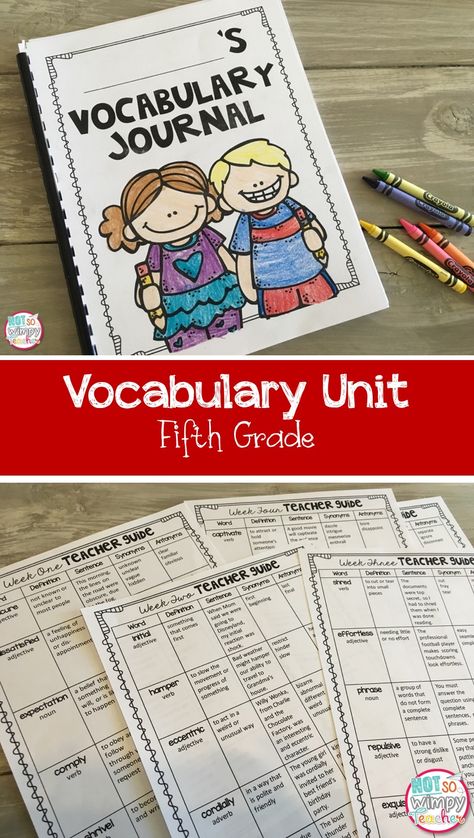
Learn more: Graphic Organizers/Upper Elementary Snapshots
13. Focus on a Word of the Week
Give really important terms the attention they deserve. Choose a new vocab word each week, then explore it in depth day by day.
Learn more: Lit In Focus
14. Join the Million Dollar Word Club
Post a list of target vocab words. If a student uses one of the words in class (outside of vocabulary activities), they become a member of the Million Dollar Word Club! You can have them sign their name on a wall in the classroom or award a badge online. You could even develop this into a reward system for homework passes or extra credit.
Learn more: Million Dollar Words/The Sassy Apple
15. Explore shades of meaning
This is a cool idea for exploring synonyms and the slight differences that make words unique. Ask for paint sample strips at your local hardware store, or buy a clip art set. In the classroom, use these paint strips to make crafts for a bulletin board.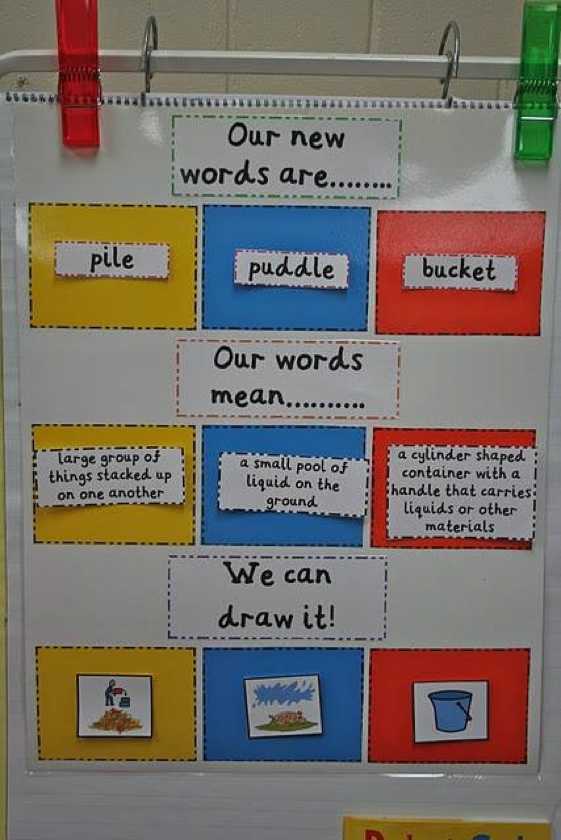 Working in a virtual environment? Have kids print clip art strips at home or use the images to make slides or digital worksheets.
Working in a virtual environment? Have kids print clip art strips at home or use the images to make slides or digital worksheets.
Learn more: Around the Kampfire
16. Personify a word with social media
This is one of those vocabulary activities kids will want to do over and over again! Assign each student a word and have them create a fake Facebook, Instagram, or other social media page for it. They can draw them freehand or complete a template like these from Teachers Pay Teachers. Post the images to a shared Google slideshow so other students can use them for review.
Learn more: Reading and Writing Haven
17. Play vocabulary word Taboo
In this game, the goal is for one student to get their partner to guess the word by describing or giving examples of it. The trick? There’s a list of additional words they’re not allowed to use! Let other students see the card in advance to help keep the players honest. (Flash it on a whiteboard and have the guesser face away.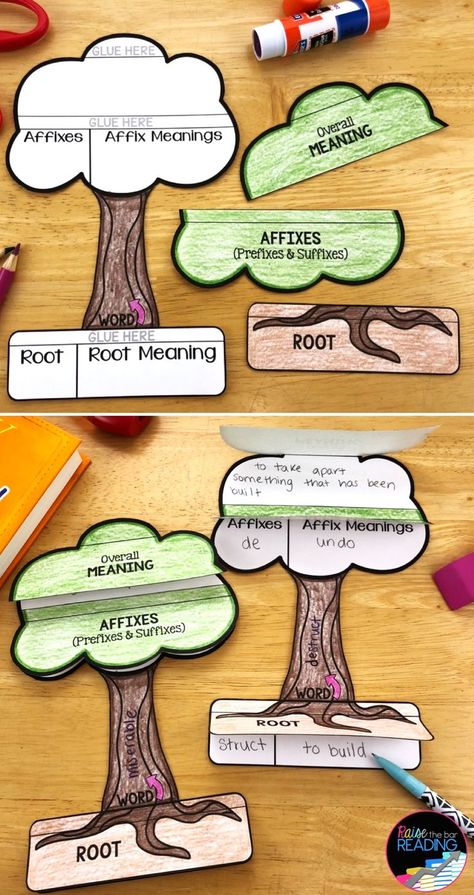 )
)
Learn more: Teaching Talking
18. Roll a die for vocabulary activities
Choose a vocab word, then have the student roll a die (these virtual dice are handy) to see which activity they get to complete.
Learn more: Roll a Word/Lucky Little Learners
19. Write an acrostic
Write an acrostic poem for each vocab term, using the letters to determine the first word in each line. This can get really challenging when words are longer!
Learn more: Vocab Acrostic/Upper Elementary Snapshots
20. Become a Word Collector
This is one of those picture books that grown-up kids will enjoy as much as little ones. Use it to remind your kids that they don’t need a vocabulary list to learn new words—new words are all around them.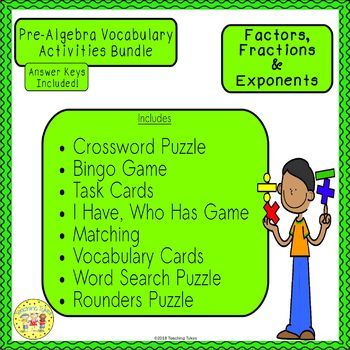 Encourage them to keep a word list or journal of their own to record new words they want to explore and use more often.
Encourage them to keep a word list or journal of their own to record new words they want to explore and use more often.
Looking for more language arts ideas? Try these 11 Essential Tips for Teaching Theme.
Plus, get all the latest teaching tips and ideas when you sign up for our free newsletters!
21 Ideas for Teaching Vocabulary in the Classroom
I’m sharing 21 ideas for teaching vocabulary. You may not be able to use all of them, but I hope you can find some ideas that will work well for you!
I’ve shared books about vocabulary instruction, as well as the theory and techniques. This post is a lot more practical. We’re all about ideas today!
I’m sharing the bare bones of the ideas here.
I’m adding lengthier explanations for some of them with more tips and fleshed-out instructions on my website devoted just to vocabulary instruction, VocabularyLuau.
You’ll see that option at the end of the idea if it’s available.
IDEA #1: Semantic Maps
In this activity, the teacher chooses a word and displays it for the class on a whiteboard, etc.
Students read the word and then think of words that come to mind when they see that word (this is awesome because it activates prior learning).
A list is created of all of the words that come to mind, and then those words are categorized.
This can be done as a whole class or in small groups.
Students then create a “map” using a graphic organizer and discuss it. Additional or substitute categories can be suggested.
As students read through the text, they can add related words to the map.
Want more details on this strategy? Get the step-by-step on VocabularyLuau.
IDEA #2: Eye Spy
Give students a list of words to search for in a text or have them find unfamiliar words.
You can award points to the words based on different criteria (longest new word, word with most consonants, etc.).
Invest in a set of inexpensive dollar store magnifying glasses to make this more game-like.
This is a great pre-reading activity.
Want more details on this strategy? Get the step-by-step on VocabularyLuau.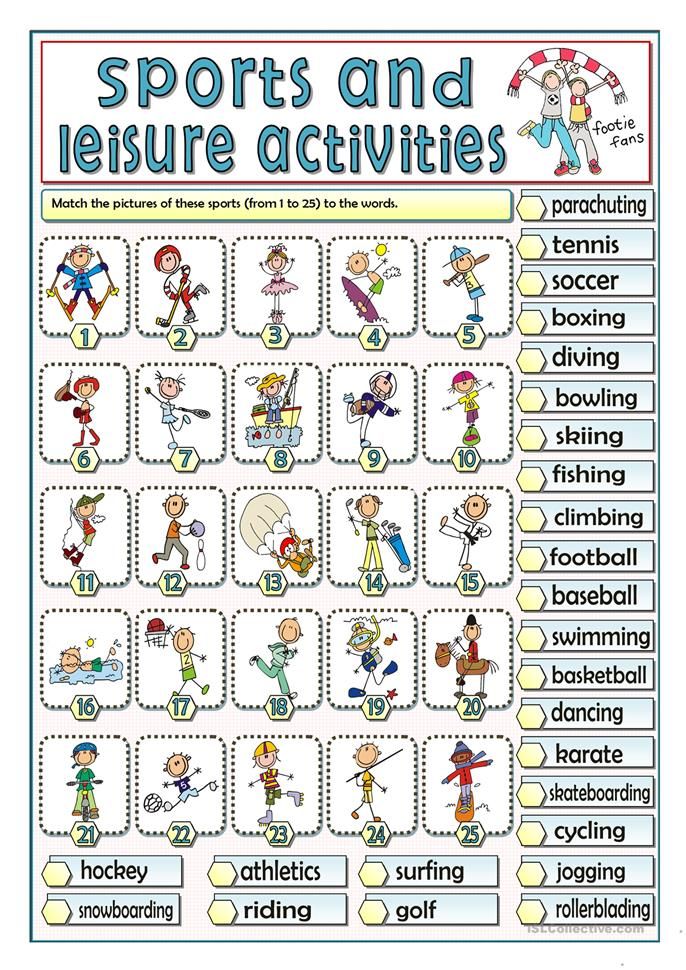
IDEA #3: Making Choices
Students show their understanding of vocabulary by saying the word when it applies, or remaining silent when it doesn’t.
For example: “Say radiant if any of these things would make someone look radiant.”
-Winning a million dollars.
-Earning a gold medal.
-Walking to the post office.
-Cleaning your room.
-Having a picture you painted hung in the school library.
(This idea is from the book Bringing Words to Life, recommended in the books section.)
This is one of the key strategies teachers need in introducing new vocabulary. Because of that, I’ve written extensively and given a dozen examples from different texts for Kinder through 12th grade on VocabularyLuau.
IDEA #4: Sorting Hat
Use a Harry Potter theme to have students sort words into categories. They can pull them out of a hat.
If you give them the categories, it’s called a “closed sort.” If they come up with their own categories, it’s called “open sort.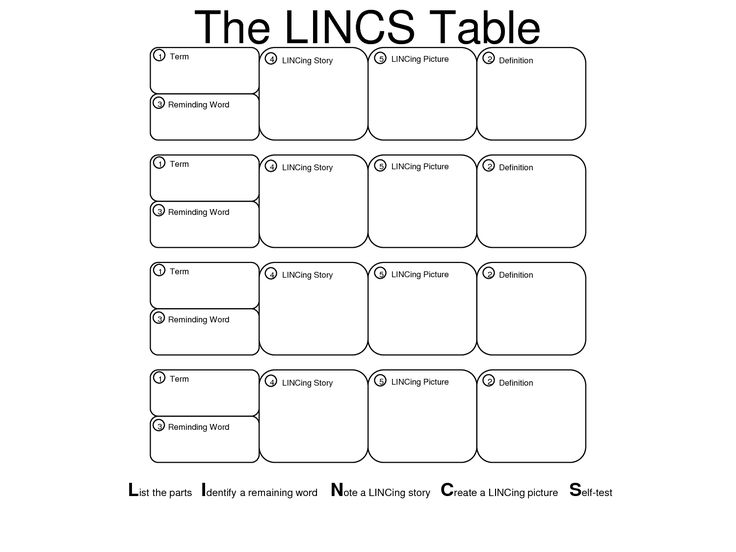 ”
”
This one is so, so fun. I explain lots more about how to do it on VocabularyLuau.
IDEA #5: Word Pairs
Give students words in pairs and have them evaluate if the words are the same, opposite, go together, or are unrelated.
This strategy is terrific for building critical thinking skills along with the vocabulary.
Get even more details and variations at VocabularyLuau.
(adapted from Word Power: What Every Educator Needs to Know about Teaching Vocabulary)
IDEA #6: Linear Array
In this strategy, students use a graphic organizer that is a rectangle, three ovals, and then another rectangle, all in a line.
The word in question goes in the rectangle on the far left.
The rectangle on the far right is filled in with a word that is the opposite.
The center three ovals are filled in with words that go from the far left to the far right, gradually become less similar until they reach the opposite.
For example, microscopic, tiny, small, bigger, large.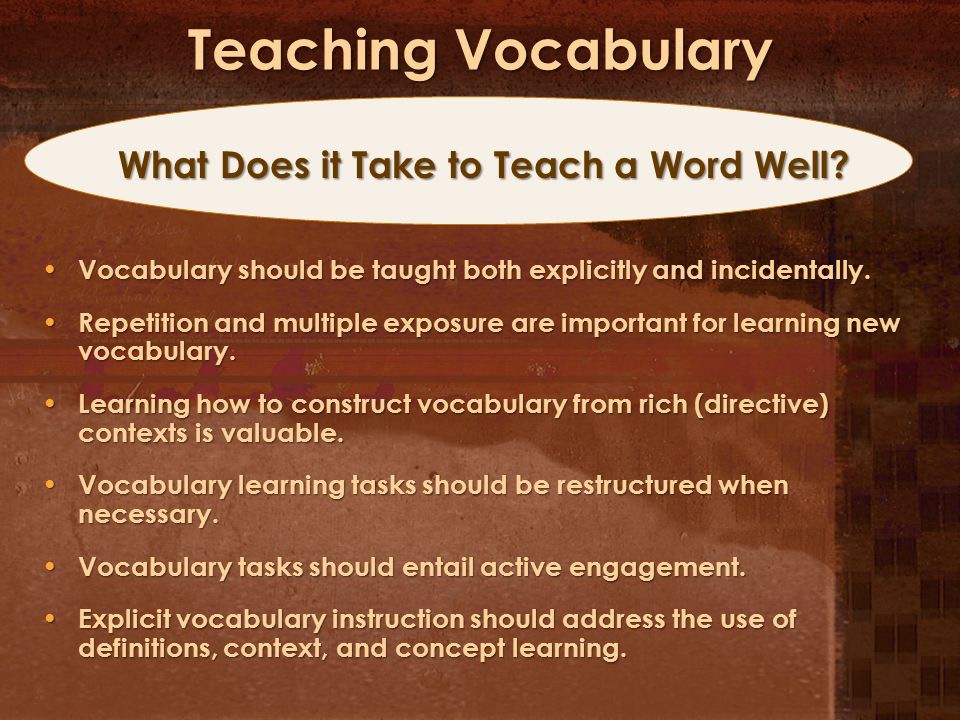
You can see examples of the graphic organizer, more details, and lots of variations on VocabularyLuau.
(adapted from Words, Words, Words: Teaching Vocabulary in Grades 4 – 12)
IDEA #7: Games
Many “real” games work well for vocab play and practice. Games such as Balderdash, Taboo, Scrabble, Blurt, Bananagrams, word bingo, and others are fun.
There are online games as well, such as Scholastic’s Synonym Toast.
[Note: I am a notoriously horrible Scrabble player, and every time I play I think, “English teachers should be better at this.” It’s not my favorite.]
IDEA #8: Scavenger Hunt
Have a word scavenger hunt in books, magazines, articles on the net, or in the school or home.
Don’t just go for numbers; go for unusual words, academic vocabulary, weird spellings, homophones, etc.
Want more details on this strategy? Get the step-by-step on VocabularyLuau.
IDEA #9: Word Wheel
Copy and paste this image onto a sheet of cardstock and make a vocab spinner game.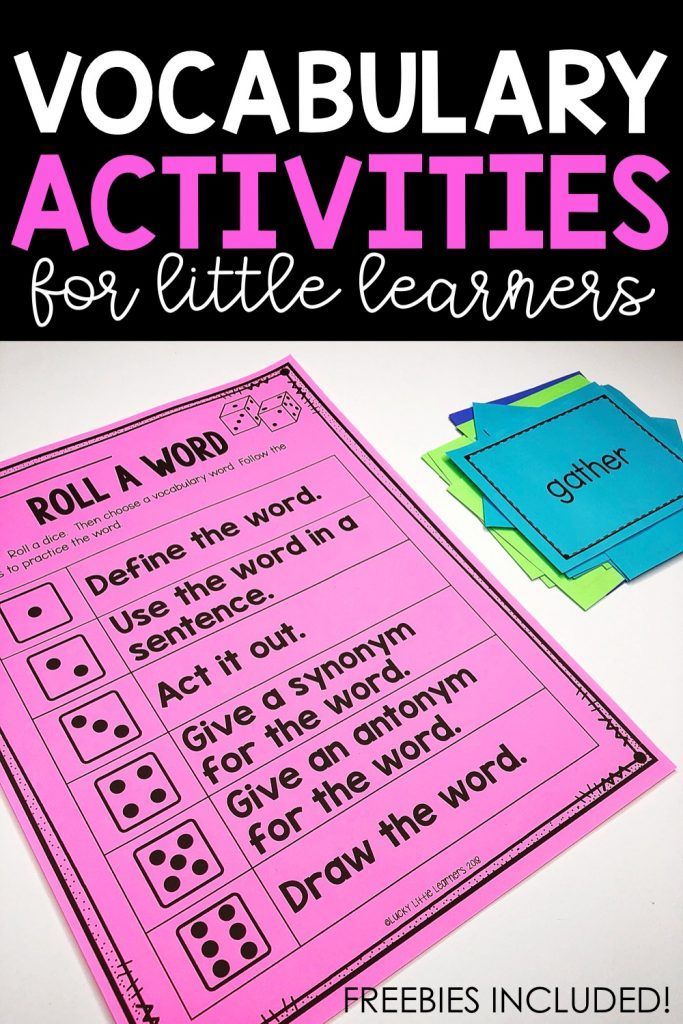 EisforExplore shares the whole idea here.
EisforExplore shares the whole idea here.
Want more details on this strategy? Get the step-by-step on VocabularyLuau.
IDEA #10: Vocabulary Photo Album
Using a simple, inexpensive photo album, students create a visual glossary of key words.
I’ve got pictures of examples, details, and more ideas at VocabularyLuau, if you’d like to read more.
IDEA #11: Tally
Use tally marks to track words you’re trying to practice.
Mark whenever the teacher says the word in context, and mark twice when a student does.
Alternatively, you can have the tally marks be even, but play the teacher versus the class.
There’s so much more to this strategy. Learn more about how tally marks can help you teach vocabulary at VocabularyLuau.
IDEA #12: Vocabulary Relay
Print out words on one set of cards (copy this set a few times) and definitions, context, or sentences in which they could be used (fill-in-the-blank) on another set (just one set).
Jumble up the words in a pile in the middle of the floor, and jumble up the definitions, context, and sentences to keep with you.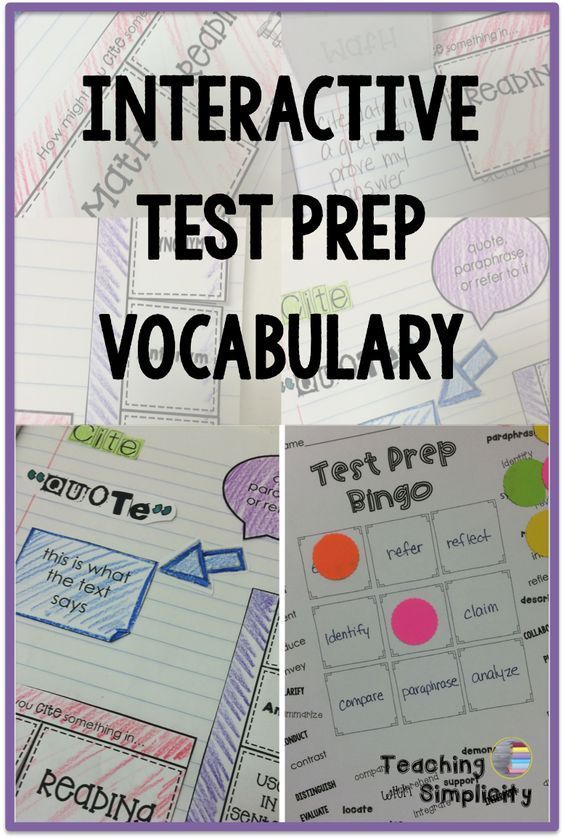 Break students into teams of five-ish.
Break students into teams of five-ish.
Call out the definition/context/sentence and give students some think time (8 – 10 seconds) to talk about what word it might be.
After the discussion time, call out “Word!” One member from each team runs to the center and tries to find the word in the pile.
I like having multiple sets of the words so more than one team can get it.
Check to make sure they’re correct, and then discuss it briefly before the next round.
Note: I got this idea from another teacher’s site, but I cannot for the life of me remember where. I have searched Google for it, and can’t find it. A small prize to the person who can figure out the originator of the idea!
I’ve written quite a bit about it here, but I’ve written more (and have lots of pictures of it in play) at VocabularyLuau.
IDEA #13: Vocabulary Category Relay
This is a different relay activity than the one above, even though the names are so similar.
In this version, teams of students race to fill in words responsive to a category that start with the letters of the alphabet in order.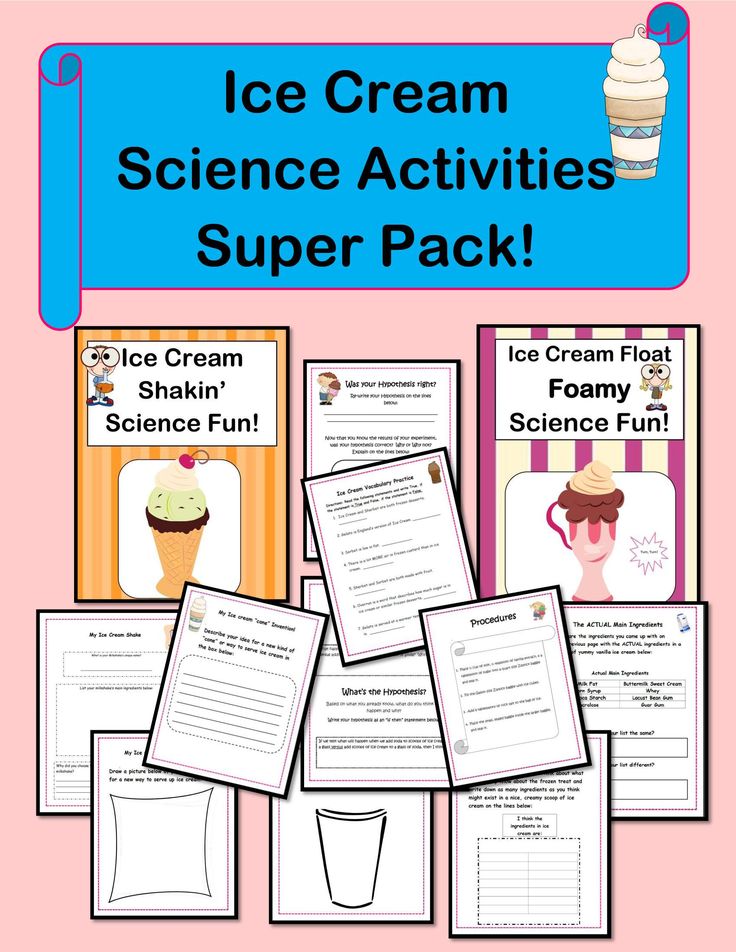
This can be done individually, in groups, or even as a whole class. It’s also a good one for both digital and in-person instruction.
When I wrote about it on VocabularyLuau, I shared these score sheets for digital use, as well as printable versions.
IDEA #13: Comic Strip Word Activity
I got the idea for using comic strips from This Reading Mama.
In some ways, it’s really a modified Frayer model.
I loved it so much that I started making them like crazy. It turns out that they let me get a clear glimpse into how well the students had mastered the word.
I have an entire article about this, filled with loads of ideas and resources at VocabularyLuau.
You can check out that article here (or click the image below).
IDEA #14: Paper Plate Vocab
I love this inexpensive matching game from Finding Joy in Fifth Grade, and I think students could create it themselves.
IDEA #15: Heads Up Vocabulary Game
Students hold a word on a card in front of their foreheads. The students don’t know what words they have.
The students don’t know what words they have.
Students ask each other a series of questions to determine the meaning of their word. Or, students can give students clues to the person with the word to help that person guess the word.
This is a review activity, and it’s not for initial instruction.
It’s such a favorite that I wrote a very comprehensive article about it on VocabularyLuau. There’s even a hack for printing on Post-it notes!
IDEA #16: Word Sneak
Word Sneak is a game invented by Jimmy Fallon that he plays with guests on the Tonight Show.
In the game, Jimmy and the guest each get a stack of cards with words on them that they have to work into the conversation naturally (without sounding forced or stilted).
It’s hysterical to watch and fun to play.
It’s also a great way to learn different ways to approach a word.
It’s so much fun that when I wrote the article about in on VocabularyLuau, I also included a Tonight Show backdrop you can use in class to give it an even more “real” feel.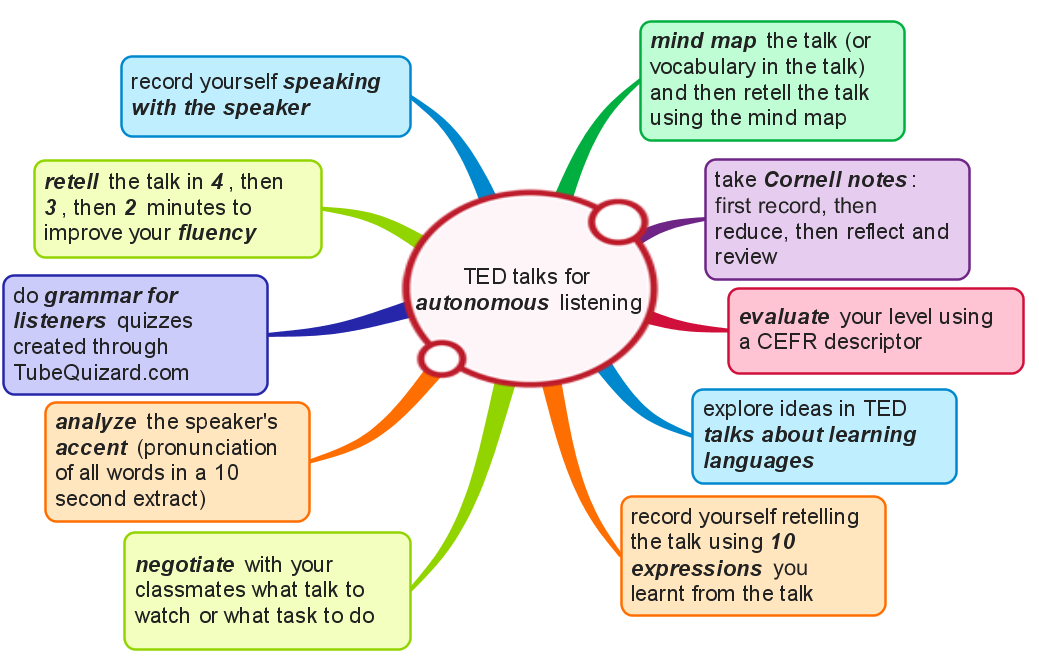
IDEA #17: Frayer Model
The Frayer Model is an oldie-but-goodie vocab activity model in which student work in multiple ways in a specifically laid out graphic organizer to engage with words.
This is such a must-know that I wrote a (very lengthy and detailed) plan for how to use it at VocabularyLuau.
It includes downloads and printables and digital versions, as well as exactly how (and why) to use this strategy.
If you are not familiar with it, please do yourself a solid and read more.
IDEA #18: Tweet
Have students create a “tweet” that a word would send out or with the word in the tweet in context.
You can use a tool like PrankmeNot or Siminator to make it look real.
This strategy is so fun and so useful!
I’ve written about five different ways to do this (with examples) on VocabularyLuau, and I even have this free template for you there:
IDEA #19: Brain Power Words
This is a strong academic vocabulary activity that takes a little bit of time, but would really help get the words past the superficial level of understanding.
- Ask small groups of students to preview sections of a text and identify difficult words.
- For long chapters, assign different sections to different groups.
- Students place a Post-it next to the words in the text they identify as potentially difficult.
- After identifying the words, the group goes back and uses context clues to hypothesize what the words might mean.
- Clues of substitution: A known word would make sense in the context and is probably a good definition.
- Clues of definition: The word is defined in the text (many textbooks do this).
- Clues of opposition: Words “not, unlike” etc. are excellent clues to what a word is not and thus help define the words.
- After the Brain Power Words list is identified and definitions sought, the students check their work with the teacher.
This strategy is from Becky McTague and Margaret Richek (it’s in the book Reading Success for Struggling Adolescent Learners by Susan Lenski and Jill Lewis).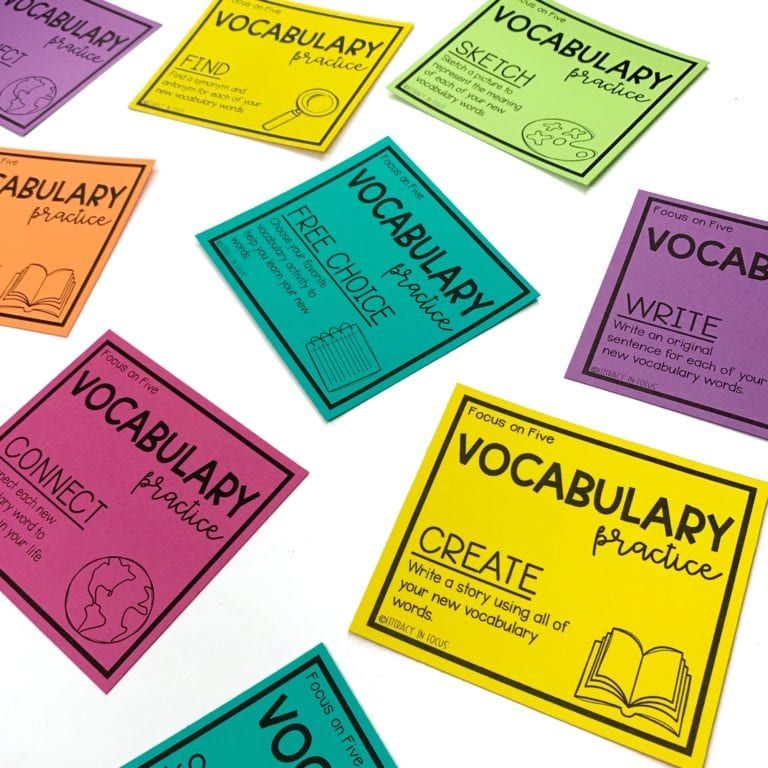
IDEA #20: The Concept Cube
A concept cube is a pattern that is printed on paper or cardstock, cut out, folded, and taped into a three-dimensional cube.
Students write, type, or draw on the pattern prior to assembling the cube, and then they “play” with the cube to explore concepts.
Depending upon the way you choose to use it, they can be similar to a three-dimensional Frayer model.
You can print out a blank cube and have students print the responses below, or complete it online and then print it out.
Before folding, students write clearly in each square following the directions below.
Each student is given one challenging vocabulary word from a recent reading and asked to:
- Write the assigned vocabulary word in one square.
- Write a synonym (word or phrase) in another square.
- Write an antonym (word or phrase) in another square.
- Write a category or categories it could belong to.
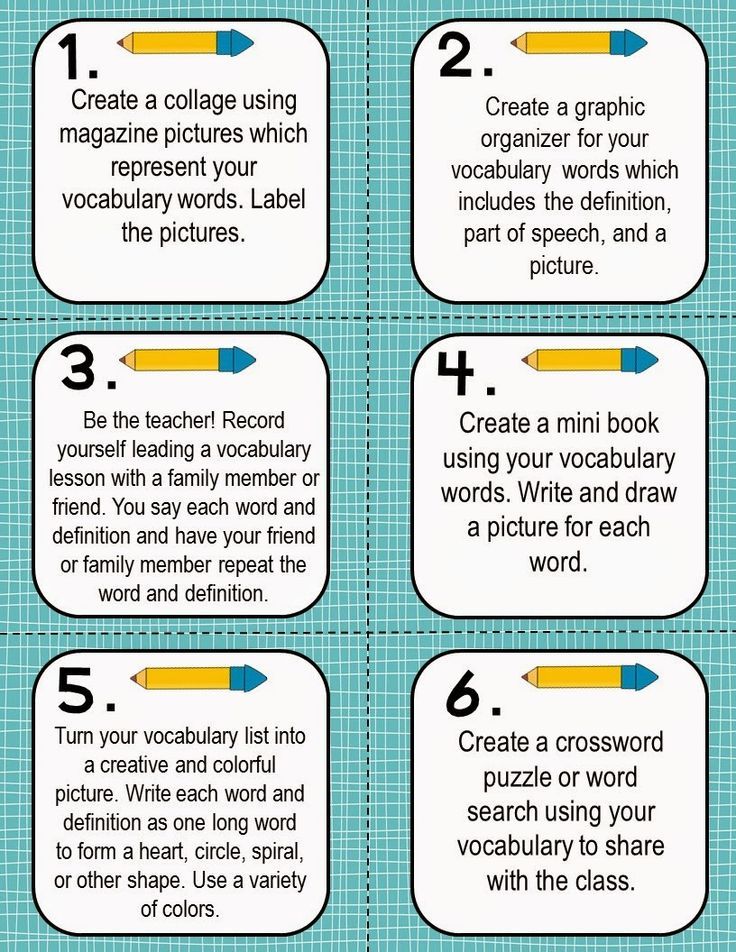
- Write the essential characteristics of the concept of this word.
- Give one example.
Cut, fold, and tape the cube.
Roll the cube and read what comes up on the “top”; the student must tell the relationship of that word or phrase to the original word.
After students know their own cube without any errors, they exchange with a peer.
You can get more ideas and details, as well as a free printable, at VocabularyLuau.
IDEA #21: Phone a Friend
Search TeacherspayTeachers or Teachers Notebook for vocabulary activities you can use or adapt.
The beauty of this is that you can search by grade level and subject, so you can focus on what you’re studying.
A caveat to this is that if you create something grade level or content specific, you can share it with other teachers, too.
The Importance of a Variety of Activities
You want to have a variety of activities so that vocabulary instruction doesn’t become routine or boring.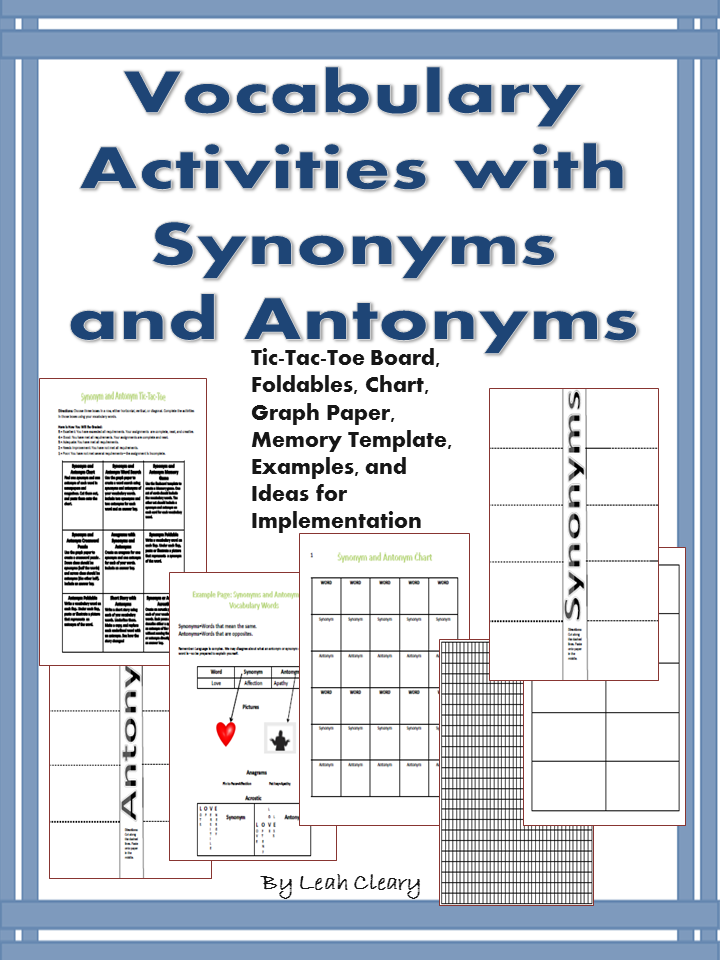
Keeping it fresh with lots of different ways of learning will help students (and the teacher) avoid getting burned out or tired of working with vocabulary.
There’s been so much interest in this that I created an entire website just for vocab ideas called VocabularyLuau.
These 21 activities for teaching vocabulary are just a start. I’d love to know your ideas!
The Vocabulary Series
This post is Part 3 of a four-part series on teaching vocabulary. If you would like to check out the rest of the series, visit the posts below
- Teaching Vocabulary: The books
- Theories & Techniques that work (and don’t)
- 21 Activities for Teaching Vocabulary (this one)
- Ideas for English Language Learners
There’s even a great book for teaching vocabulary!
These ideas work for all vocabulary words.
If your students need to learn vocabulary words and terms that are specific to your content (words like acute angle or latitude or simile or biome), have I got a book for you!
You know how I know it’s great? I wrote it! I wrote it for teachers just like you from the method I created in my own class with my own students and tested over and over.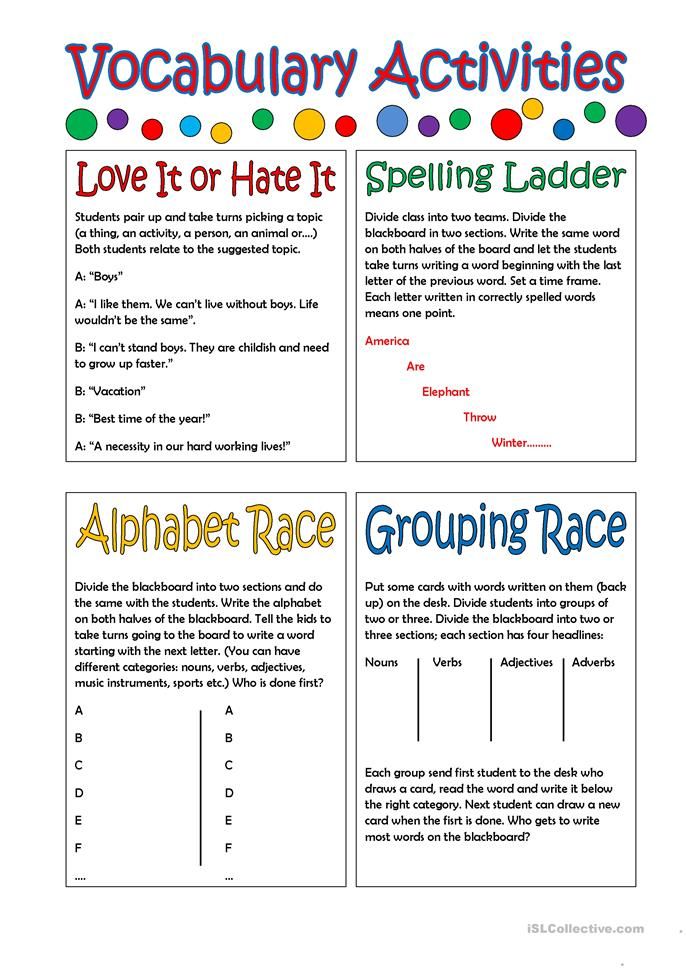
You can learn more about it by clicking on the picture of it, or you can read more and see loads of examples here.
If you already know you want it, you can grab a paperback version on Amazon.
Or, if you want a digital copy, you can use the coupon code GIFTEDGURU for 20% off you can…
Grab your copy
Do You Like Great Ideas?
If so, I share them in my email o’ goodness that goes out about once a month to thousands of people just like you.
You can sign up here (it’s free).
Note: This content uses referral links. Read my disclosure policy (it’s fascinating) for more info.
5 vocabulary development exercises
How pleasant it is to listen to eloquent and competent speech when a person knows how to choose the right words and accurately describe his thought. And illiterate, “poor” speech, which is quite difficult to understand, cuts the ear just as much. It is a large vocabulary that is a sign of intellectual development and can help you in learning, working or speaking in front of a large audience.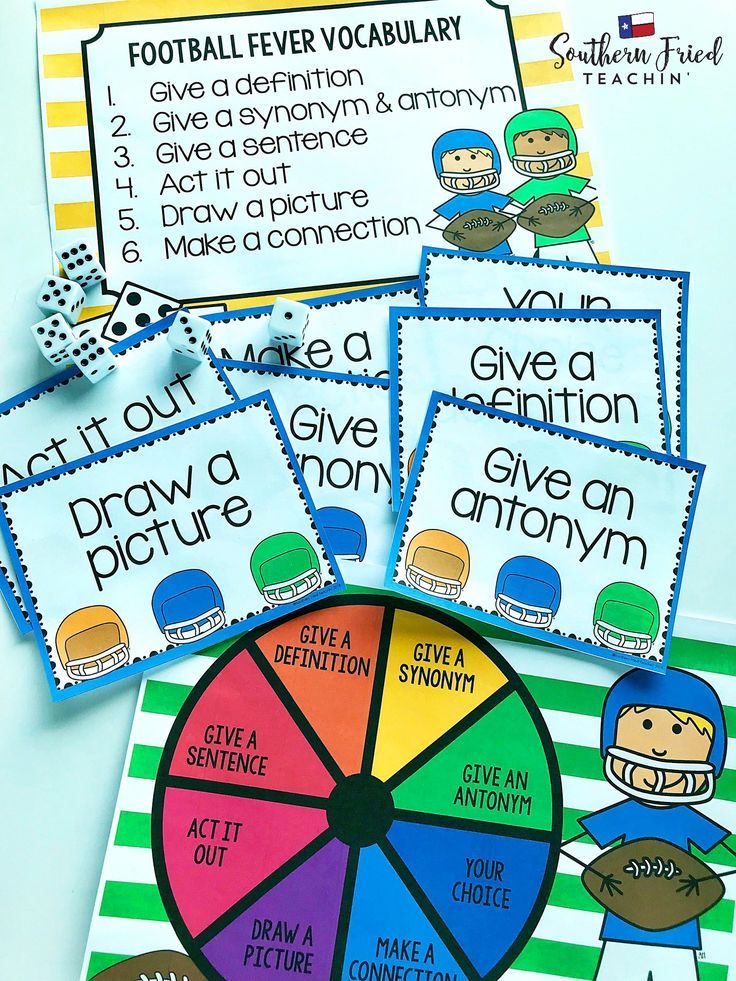
Before starting the study of exercises to increase vocabulary, let's look at the types of vocabulary:
- Active vocabulary. These are the words that we use in everyday life when communicating with friends, family, colleagues. When writing letters, SMS in chat, social networks. When we speak, we do not think about the words and do not put effort into constructing sentences.
- Passive vocabulary. These are words that we know, but do not use in conversation. As a rule, the passive reserve can be 2-3 times greater than the active one. On occasion, we can search in our head and find the right words, but we do this very rarely.
- External vocabulary. These are words we don't know. Usually these are specific words from the professional field of activity.
It is rather difficult to set clear boundaries in the vocabulary. Children's vocabulary can average 1000 words, adults have 10 times more. Erudite people who are constantly engaged in self-development, read a lot of books and constantly study, have a vocabulary of up to 50,000 words.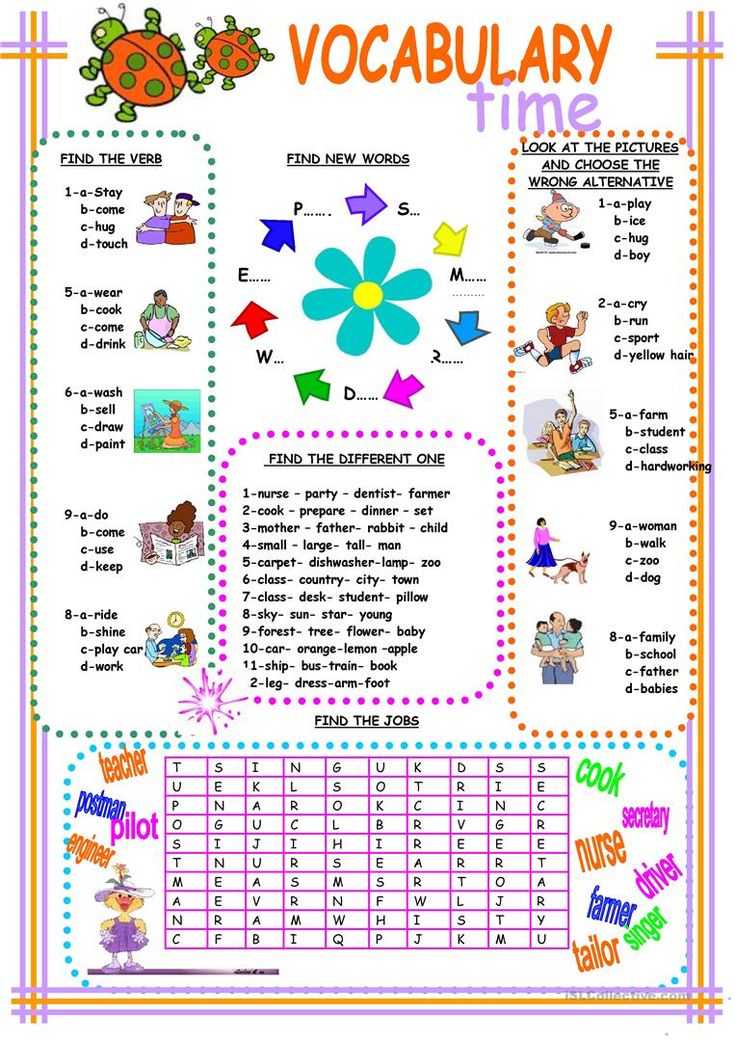 Therefore, we have selected such universal exercises to expand the active vocabulary that schoolchildren, students or specialists can perform.
Therefore, we have selected such universal exercises to expand the active vocabulary that schoolchildren, students or specialists can perform.
- Alphabet exercise. You need to come up with a sentence in which all words will begin with the next letter of the alphabet. Example: "Alina runs in the thick of trees." Try to make long sentences using words from A to Z.
- Noun exercise. Make up a story and tell it using only nouns. "Morning. Water. Walk. Dog. Tea. Breakfast. Underground. Job. Meeting. Tasks. Dinner."
- Exercise "Verbs". Repeat the previous exercise, only using verbs instead of nouns.
- Exercise "Adjectives and adverbs". Also invent a story, just voice it now with the help of adjectives and adverbs.
- Exercise "Monophone". Remember all the words that start with the letter A and come up with a sentence with them, keeping the meaning. And do this with all the letters in the alphabet.
These exercises will be difficult to complete at first, so don't give up too soon.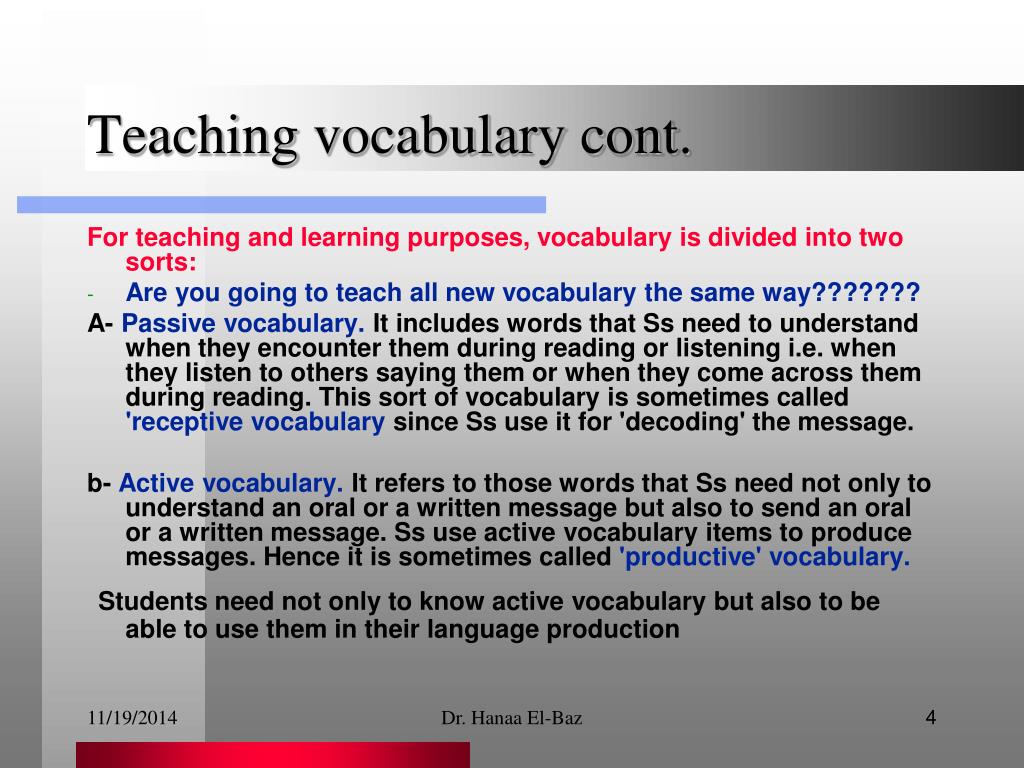 Each time, it will be easier for you to come up with stories and look for the right words. You will find even more useful information on the website "Russia - the land of opportunities". The platform hosts free online courses, webinars on marketing, PR, charity, management, psychology, and finance. Follow the link to register on the site and get access to unique programs.
Each time, it will be easier for you to come up with stories and look for the right words. You will find even more useful information on the website "Russia - the land of opportunities". The platform hosts free online courses, webinars on marketing, PR, charity, management, psychology, and finance. Follow the link to register on the site and get access to unique programs.
Techniques for increasing vocabulary
In this article we will talk about various approaches, methods and techniques for replenishing the vocabulary of English words, memorizing them faster and more confidently retaining them in long-term memory.
First of all, it is necessary to realize that the work of enriching and maintaining in the form of a stock of foreign words is one of the key blocks in learning a language, along with mastering grammar, listening and speaking practice.
That is, relatively speaking, even if you have perfectly mastered all 12 tenses of English (someone is of the opinion that there are as many as 24 of them!), then this loses its value if you simply do not know the specific words with which the sentence is built .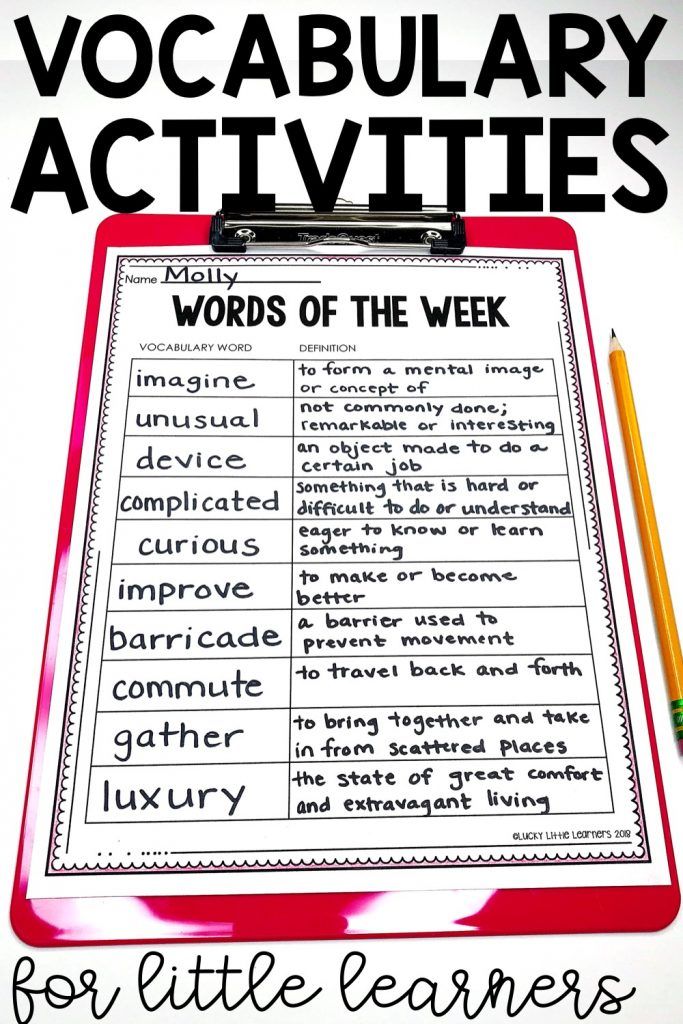
And vice versa, you can poorly understand the grammatical structures of English speech, but "pick up" various words and be able to quite informatively and tolerably explain yourself abroad, especially when it comes to communicating with a non-native speaker. A classic example of such a variant is communication abroad of our tourists at the level - "How mach", "Ay wont zis ti-shert", "an mor bir", etc.
Of course, these examples are exaggerated, but they allow showing 2 different conditional boundaries of language proficiency. As practice shows, the truth is in the middle - understanding the basics of grammar with a confident vocabulary.
From the above, I would like to conclude that learning and repeating words is not a whim of teachers, but a conscious need for any language learning. Therefore, let's dwell on this issue in more detail.
1. DO YOU KNOW THE MOST ESSENTIAL, COMMON WORDS?
Often, even from school, we have some fragmentary knowledge and words of English that have nothing to do with real life. Many of us learned English proverbs in childhood, but don't know how to say "ironing board" in English (do you know, by the way? :)
Many of us learned English proverbs in childhood, but don't know how to say "ironing board" in English (do you know, by the way? :)
plane of knowledge of subjects in English.
Do a little experiment. Look around the room where you are now and make a list of at least 50 Russian words of what you see (ideally at least 100 words). Then, next to each word from the list, try to write their English equivalent. If you managed to remember the translation of at least 80% of the words, then this is a good result. Anything less deserves close attention. After all, these are not some highly specialized words from certain professions or fields of activity, these are the things and objects that surround us all the time and whose names in English will be useful to you first of all in a real situation.
Do this practice all the time, in different places (airport, cafe, cinema, at work, at home, etc.) and write it down, write it down, write it down.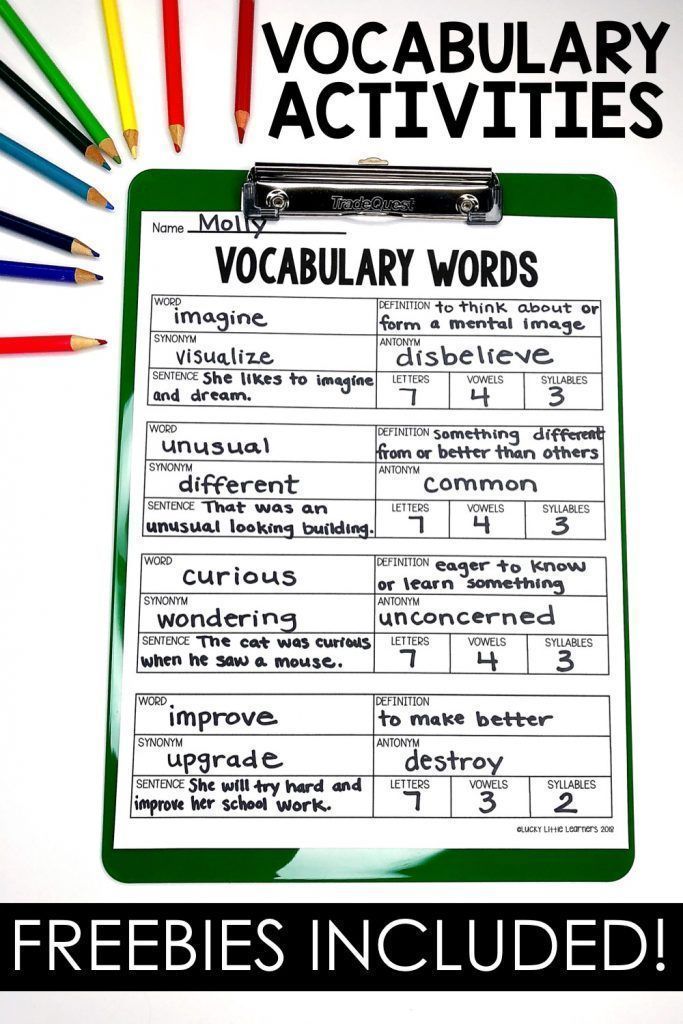 Make a list of Russian and English words in parallel. At the same time, you will understand which 500-700 words are the most common in everyday life.
Make a list of Russian and English words in parallel. At the same time, you will understand which 500-700 words are the most common in everyday life.
Choose a translation for these words and memorize them. So you will enrich your language with real, everyday and really necessary words.
2. PERMANENT WORK WITH YOUR OWN POCKET DICTIONARY
Here you have to accustom yourself to always take a pocket dictionary with you and write down everything new in it. We sincerely advise you to still use a small notebook (preferably just empty inside, without rulers and cells), which will fit into any bag or jacket pocket, maybe writing a word with a pen stimulates the brain to memorize better.
If you are serious about learning a language, make it a habit to always take such a dictionary with you. Have you come up with a new word that you don't know how to say in English? Immediately write it down in the dictionary, you will find the translation at home later.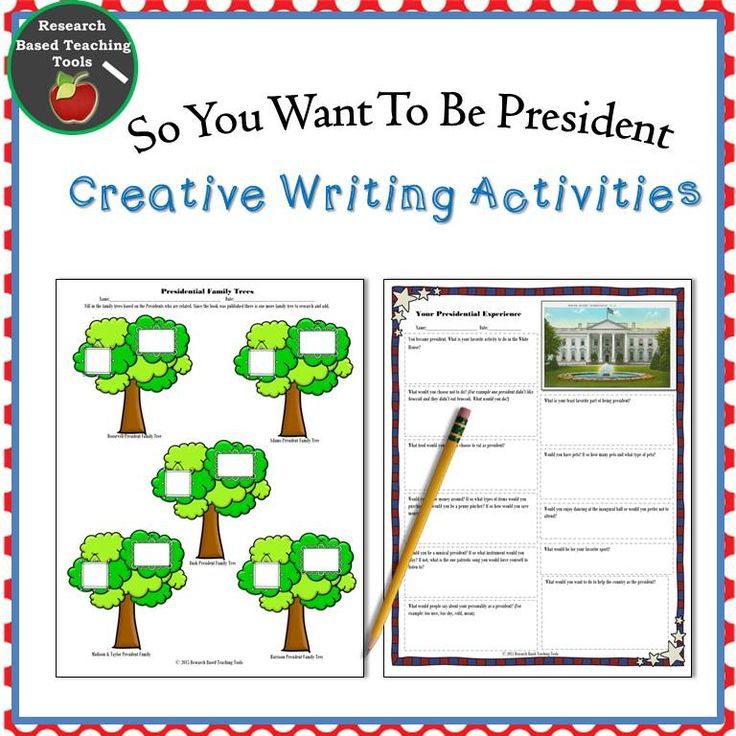 Heard a new expression in English? Feel free to write it in a dictionary. Strive to absorb new knowledge with the help of a dictionary at every convenient situation.
Heard a new expression in English? Feel free to write it in a dictionary. Strive to absorb new knowledge with the help of a dictionary at every convenient situation.
Also, this dictionary can be read when traveling in transport, working breaks, lunch, etc.
Enjoy working with your pocket dictionary. Let it be your guide to the world of new English words.
3. SYNONYMS, ANTONYMS
Take a list of 50 words you have learned in the last week. Try to write a synonym, an antonym, or just related words that are close in meaning. For starters, in Russian. Then translate them into English and put them in your dictionary. With such a creative technique, you can replenish your vocabulary for a long time and effectively.
4. LEARN GROUPS OF NEW WORDS
Learn at once groups of words connected by a single context. For example "Parts of the body", "Astronomy", "Furniture", "Weather", etc.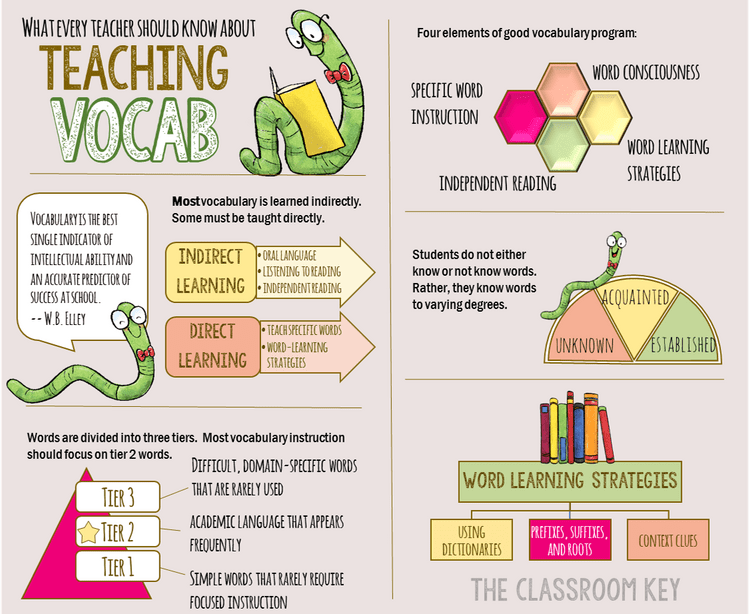 This practice is widely used by almost all language schools in the world, as well as by the largest English publishing houses in the field of language teaching.
This practice is widely used by almost all language schools in the world, as well as by the largest English publishing houses in the field of language teaching.
This approach allows you to effectively cover a whole layer of English words on a certain topic at once. Let's give a little advice - if you are new to learning English, then, nevertheless, start with simple, widely used categories, like: "Transport", "Utensils" and so on. No need to immediately start learning words from the field of politics, music or biology :)
This will only confuse you. Start small. Master your first 500 "simple" words. Then you can add something more narrowly specialized.
Everyone works on memorizing English words in different ways. It is convenient for someone to run through their eyes for a couple of minutes before going to bed, someone makes crossword puzzles with them, someone reads aloud - in general, there are a great many methods here.
5. COMBINE WORD MEMORY TECHNIQUES
In order for the process of replenishing your word box not to turn into a boring routine, start combining different methods.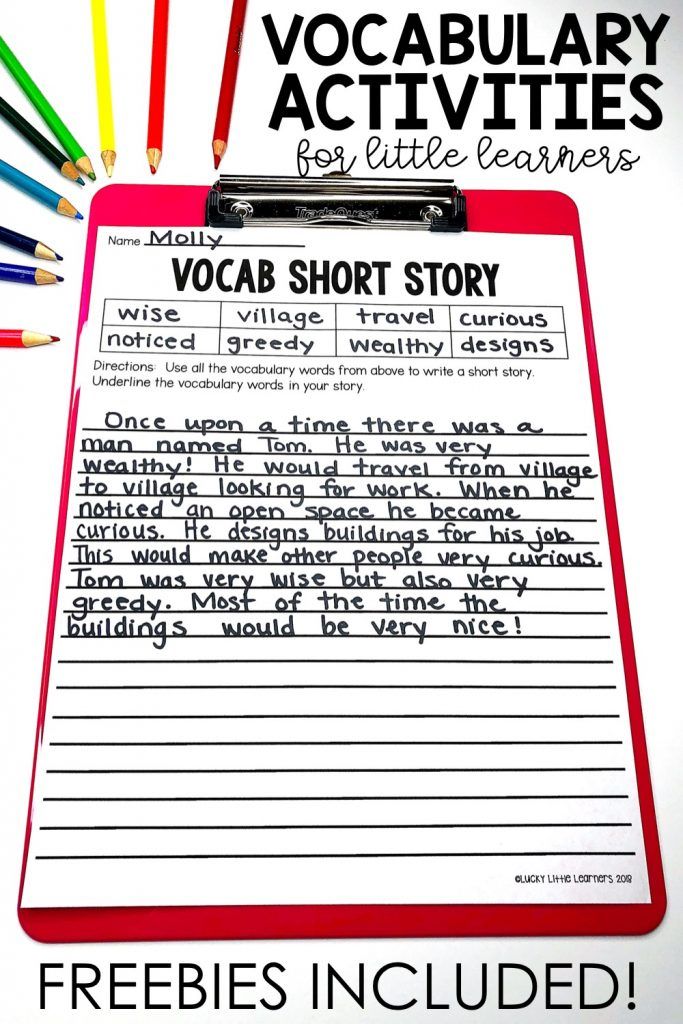
For example, one day you can read all the words aloud with maximum attention to pronunciation, the other day you can just read them in English and try to remember the translation. Sometime, it will be appropriate to try to write one small sentence with each word.
In general, do not focus only on learning words from a textbook, or daily cramming. Add creativity to this process. Make learning English more varied. However, do not forget that even when combining different techniques, this must be done with a due degree of consistency and diligence.
6. A FEW NEW WORDS A DAY FROM YOUR FAVORITE BOOK
Find some small work, originally written in English, preferably 50-100 pages long, which you have already read in Russian. It could be a short story or a collection of poems.
Start re-reading this work (only now in English, not in Russian), but following one uncomplicated method. Read the story every day and write it down in your dictionary every new word that you don't know. And so on, until you reach 5 new words.
And so on, until you reach 5 new words.
At first it can be some 3-4 lines, which will just fit your 5 new words. Don't worry that your vocabulary runs out so quickly. First of all, you have already read this book, so you don’t have to worry about misunderstanding the meaning of individual sentences or the general convoy of the plot (therefore, it is advisable to take a work that you know well).
Such reading, as a rule, takes from 2 to 10 minutes, depending on the level of knowledge in English. This time is usually enough to see and write down 5 new English words. But there is an important point here - do it effectively every day. Yes, 5 minutes. Yes, only 5 new words. But every day.
Imagine, in a month it will be 150 new words. And in 1 year this figure will exceed one and a half thousand :)
The main thing here is to follow 3 rules:
1. You know the book well
2. The book is small (50-100 pages)
3. Only 5 new words and STOP .

